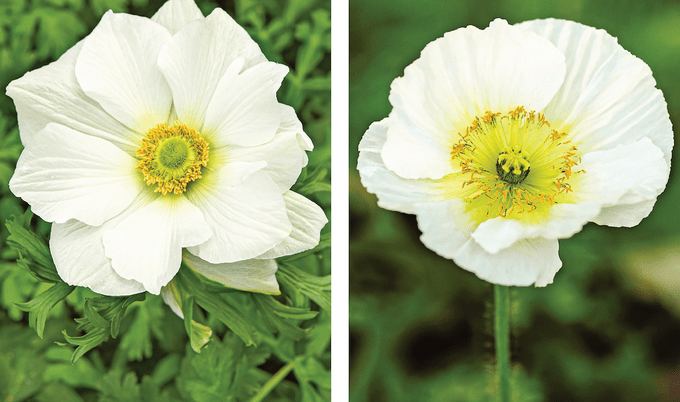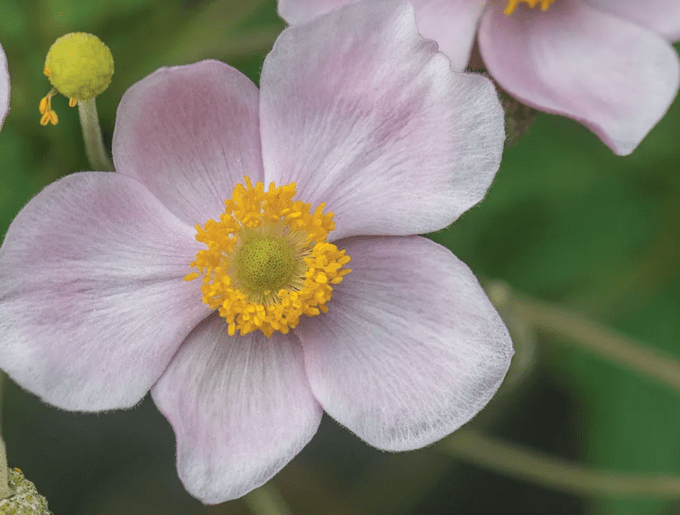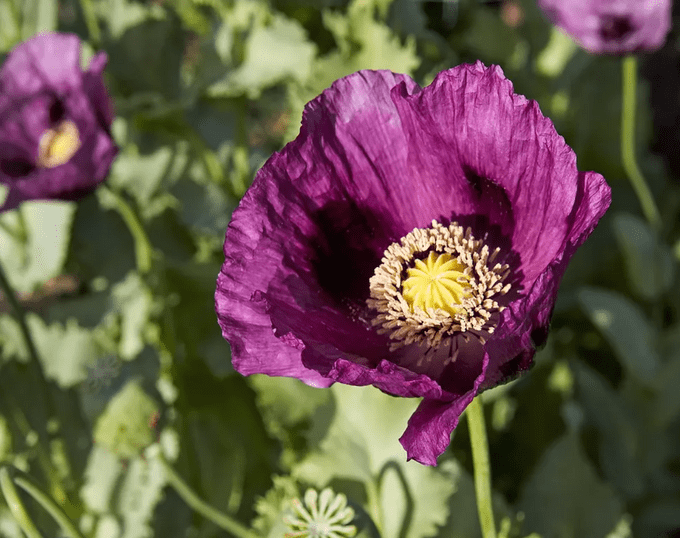Poppy vs Anemone Flowers: What’s the Difference?
Updated: Apr. 05, 2023
You've heard of a poppy, anemone, or even a poppy anemone. But what separates them? Learn the differences between these well-loved flowers.
Our editors and experts handpick every product we feature. We may earn a commission from your purchases.
Poppy vs Anemone: Similarities and Differences

No one could fault you for confusing poppies and anemones. Both flowers usually bloom in spring, and they look just similar enough to blur together in any seasoned gardener’s mind. White poppy flowers closely resemble white anemone flowers—and there’s even a poppy anemone flower. That said, there are plenty of differences to separate these blooms.
Anemone petals are usually slightly more elongated and ovular, while poppy petals are wider in appearance. The plants belong to different families, too. Anemones are part of the Ranunculaceae group, while poppies are part of the Papaveraceae group.
If you like the crinkly petals of these two plants, you’re in luck! With hundreds of species and cultivars of anemones and poppies on the market, you’ll no doubt find the perfect one for your yard with just a little research.
Learn why fall is the best time to plant poppy seeds.
Anemone Flower Facts

Anemones plants (Anemone coronaria) grow up to 1 ½ feet tall and 6 inches wide. The flowers, which bloom in mid-spring, grow to be about 4 inches wide and are available in blue-purple, red or pink, as well as white. Gardeners usually place anemones in beds, borders, cutting gardens and pots. These flowers are perennials in Zones 10 to 13 and annuals elsewhere.
Backyard tip: A poppy anemone, also known as windflower, is a type of anemone known for bearing a close resemblance to poppy flowers (hence the name), but it is, in fact, still an anemone. They’re often used as cut flowers, although they generally last only a few days in a vase.
Brush up on your garden IDs by discovering how to tell the difference between calendulas and marigolds.
Poppy Flower Facts

Poppies (Papaver nudicaule) grow best in Zones 4 to 9. They’re considered an annual in warmer climates, but gardeners can grow them as a perennial in cooler regions. They reach heights of 12 to 18 inches and about a foot in width. Their flowers can grow up to 4 inches wide. Flowers come in many colors, including yellow, pink, orange, and red. Gardeners often add them to beds, borders, and cottage gardens. To grow poppies, all you need to do is direct-sow a packet of seeds.
Did you know that poppies are the August birth month flower?




















